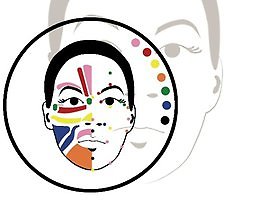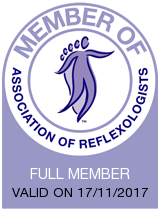Anatomy in Motion - What is it?
How we walk and stand is fundamental to our wellbeing.
Anatomy in Motion uses standing posture and gait (how we walk) to assess and understand a person’s pain or movement restrictions, and then utilizes simple full body exercises to help free them up and move them out of pain.
Injuries, operations/scarring, lifestyle, footwear, occupation etc. all play a part in how someone stands and walks. A thorough assessment will reveal what movements a person is avoiding or is unable to do.
Once identified the missing movements are reintroduced and then integrated through whole-body exercises that assimilate phases of the gait cycle.
Gait is key as it is an unconscious unchanging movement we repeat thousands of times a day. It involves every joint in the body moving in all three dimensions, and if one joint is not moving as it should then others take the strain. If we don’t put weight in our right foot, swing one arm more than the other, or can’t move our head to the left well, these all create imbalances and tensions throughout the body which will eventually lead to pain/discomfort somewhere.
Manual therapies are excellent for releasing tight muscles and freeing up stuck joints, but they don't show the brain how to move these parts properly again in relation to the rest of the body, and so don’t change the ingrained patterns of how one walks or stands. Which is why a couple of days, a week, a month, maybe even a year later, the same problem resurfaces or shifts to another part of the body.
The feet are arguably the most important part of this process because if they do not pronate (flatten) and supinate (arch up) as they should, that affects the rest of the body.
Who can it help?
This is not a passive 'lie-on-a-couch-and-get-fixed' therapy. It is designed to help you understand more about your body, how it should move and give you the tools so you can fix yourself.
As It requires you to do some simple homework exercise (10-15 minutes a day is usually enough), it is only suitable for those who are prepared to help themselves. Whether you're looking to rid yourself of long term pain, get back doing something you love, set a new personal best or just being able to get into those heels for that wedding in the summer, the motivation has to be there or you're probably not going to do it.
If you have the motivation and are prepared to do the work, then Anatomy in Motion can be particularly helpful for the following:
1) Long term muscular/skeletal pain particularly where there hasn’t been a direct injury.
2) Recurring muscle or joint complaints that always seem to resurface no matter what.
3) Foot problems. Our feet adapt to what the rest of the body is doing. Address the cause and the feet change as well. Even bunions can be helped.
4) Anyone looking to improve sporting/athletic performance.
"After 12 years of chronic pain after a snowboarding injury, after visiting numerous practitioners in various disciplines, I'd given up hope that the pain in my legs and shoulder would ever go away. I thought I'd treat myself to some reflexology for relaxation but what Rupert gave was so much more. Over a course of reflexology and AIM he managed to reduce my pain level to almost zero, enabling my body to start moving more freely. I cannot recommend him enough - he's an absolute lifesaver - Sam P
"
What is the process?
1) Pre appointment – 30 minutes analysis
I will need you to email me posture photos, a gait video, a detailed injury history plus a full description of your complaint.
I will spend half an hour analysing your gait and posture to have a good idea where the problem is coming from and so I can plan for our appointment. I will then send a couple of relevant exercises for you to try before we meet.
2) Appointment – 90 minutes
a) Assessment of the feet & how they move. Gentle foot mobilisations to free them up.
b) Assessment of how the pelvis, ribcage and skull move. (rotationally, up and down, side to side, tilting etc.).
This information will help explain posture and gait limitations.
c) We will then go through a series of exercises designed to promote movement in the areas you are struggling with. These will initially concentrate on individual joint motion and then be integrated into full body movements.
3) Homework
I will send you away with 2 or 3 key exercises to work on. 10-15 minutes a day should be sufficient but like anything, the more you put in the more you get out.
Obviously this is not an overnight process. Some cases may be resolved quite quickly, but others take time, particularly those with complex injury histories.
4) Follow-up appointments – 1 hour
Can be done in person or on Zoom

